|
|
||
|
||
|
Privacy Policy | Editorial Policy | Profit Policy | Join the Association | List of Members | Contact us | Index | Links |
||
|
Back Go to page: 1 2 3 4 5 6 7 8 9 10 11 12 13 14 15 16 17 18 19 20 Forward
|
||
|
My Story
|
||
|
|
||
|
Neville Conn.
I was born on 16 February 1942 and was blessed with great parents. We lived on a wheat farm in a place called Wail which is a railway siding located on the Western Highway approximately midway between Horsham and Nhill in the Victorian Wimmera region. The closest township is Dimboola – around 5 miles away. I was the eldest of three children, with a younger brother and a sister. The downside of being the eldest was that I worked for Dad and therefore did not get paid. This allowed my younger brother to work for neighbours and hence he was able to afford things like broken motorbikes.
Life was full of action, with tennis and footy in Dimboola and surrounds. As well as growing wheat the farm had chooks, horses, pigs, cows and sheep – so there was always stuff to do. Dad played the piano and had a band – so it was not unusual for us kids to sleep in the car, initially a 1927 Nash and later a twin spinner Ford Custom, while Mum and Dad provided music at the local dance halls.
Local area identities include Robert Menzies who was born in the nearby
As a kid my aspiration was to either play footy for Essendon or be a fighter pilot. So if not employed by Dad I was either kicking a footy or reading about Douglas Bader and Kingsford Smith. Unfortunately, I was not good enough at footy and I never did get to fly. Not an auspicious start.
My schooling was primarily conducted in Dimboola with secondary studies at the Dimboola Memorial High School. Interestingly, at the end of the war the community decided to build a school and not a monument – hence the State High School was called Dimboola Memorial High School. Students were bused from near and far to Dimboola – the high school population was around 200. In my fifth year at Dimboola High I was caught selling “frangas” to other students and the school decided we should part company. This marked the end of my free enterprise business as the Dimboola Ansell agent.
No I was not an aspiring Hugh Hefner – clearly we understood the design intention of the contraceptive, but to the best of my knowledge and within our community morality standards their use was restricted to Water Bomb containers. In this role they performed admirably and definitely entertained the girls. Interestingly, under the current Prime Minister’s innovation program I would probably be applauded for finding an additional market for the noble franga.
The expulsion had a major effect on me; primarily because of the embarrassment it caused my parents. When I was offered the opportunity to go to St Patricks College in Ballarat for my Matriculation year I really committed to getting good marks. St Pats was a great school, sport and study mad – I had a great time and got the marks I sought. I applied to join the RAAF Academy and was accepted on number 14 Course which started in January 1961.
1961 marked the transition year from RAAF College to RAAF Academy. The RAAF Academy was a college of the University of Melbourne and GD aspirants were enrolled for Bachelor of Science studies. I settled into the rhythm of the Academy and enjoyed all it had to offer. In year three I had an accident playing Rugby – an accidental kick in my right eye. The injury was not threatening and full recovery was anticipated. Unfortunately it did not recover – and the cause was identified as a melanoma within the eye. Interestingly Melbourne University had developed laser techniques that may have been able to kill and contain the growth, but I decided it was best to remove the eye and the risk. The eye was removed over the Christmas break.
With the University studies completed, I, along with my class, mates began the Military Studies phase. As they morphed into pilot training I was attached to 1AD at Laverton to work in the Motor Transport Repair Squadron - performing overhauls on motor vehicle engines and components. The intent was to provide me with some insight into being a RAAF Engineering Officer – which was something I had not contemplated. At the end of the fourth year I, along with my class mates, graduated as Flying Officers.
Even though I had been in the RAAF for four years, attended dining-in
Some things quickly got degraded – for example, the primary use for the cup of tea was to tell the time – if it was cold to the touch you were running late and if it burnt your finger you could confidently stay in the sack for another ten minutes.
Enough!
My first posting was to 1AD – the Engine Repair Squadron. The
The CO’s mandate was for all junior officers to work in overalls and spend time ‘hands on’ in each of the Engine Repair Squadron subsections – from the stripping and cleaning bay through to engine final assembly and test house. This phase of training took around one year. Working alongside me at 1AD was a Pilot Officer Mac Weller – who subsequently became an Air Vice Marshall. So the training was not wasted on all.
Unfortunately, I was in my administrative nuisance phase – with a firm intention to fly, hopefully as a pilot and at worst a navigator. So began a paper battle with Defence and a mental battle with myself – I continually attempted to prove and justify flying training and the RAAF was trying to be nice about why this could not be. The penultimate challenge arose when the RAAF advised that should there be the threat of nuclear conflict, all military pilots would be ‘taking off’ with one eye covered by an opaque patch – so in the event of being blinded by a nuclear flash they could remove the patch from the shielded eye and satisfactorily continue the mission. I discussed this problem with my ophthalmologist, who advised me that as part of the NASA space program, glasses had been developed that would transition for transparent to opaque in a flash. When I proposed this solution the RAAF lost their sense of humour. Fortunately I was beginning to accept the reality of an Engineering Officer career.
I liked messing with aircraft componentry and associated technologies and I certainly liked working with RAAF technical personnel. Whilst it took a couple of years and some heartburn for many people I progressively made the switch. The transition began with my posting to Maintenance Squadron East Sale.
After arriving at Sale, visiting the new CO/Squadron and dumping my belongings in my room etc. I decided it was time to meet my fellow officers – so off to the Mess. Upon introducing myself to a relatively large group of much older and clearly very thirsty persons (who primarily turned out to be ex-Radio Operators, Signallers, Navigators from SAN) I was advised in very direct terminology that if I did not intend to drink half a gallon before tea I should come back later - quite a welcome. I decided that the half gallon before tea was the best option. Some SAN/CFS characters from that time include: Reg Turk, Splinter Andrews, Blue Sweeting, Miles Alexander etc.
My arrival in the area coincided with the Bass Strait Oil Rig fire and the arrival of Red Adair and his team. Red was identifiable by his short stature, his mop of red hair and noise. He and his team took over the Warwick Motel on the outskirts of Sale. Whilst he and his team may have put out the oil rig fire but they surely painted the town red with a never ending series of well-funded social blazes. Parties were his forte and I remember going to a great thrash at the local undertaker’s establishment, presumably the undertaker had the most efficient refrigeration in town. I strongly recommend you google the name Red Adair and learn a little about his exploits – he was extraordinary man.
Rex Cormie was the CO of Maintenance Squadron East Sale. He was replaced by Max Bevan. An influential identity within the Squadron was Jim Hamilton, a great athlete with many inter-service records to his name, and perhaps more importantly the designer of the ubiquitous composite tool board.
Shortly after arrival at East Sale and prior to departing for Macchi training I was advised that the VIP Dakota had to be Before Flighted by an Officer as it was scheduled for VIP duties – that was me. Well that changed the colour of my day – fortunately WOFF Jack Ericson recognized my dilemma and had the aircraft comprehensively inspected by knowledgeable troops and then I with Jack providing detailed comment went over the aircraft and through the BF schedule and I signed the EE77. What a croc – requiring an Officer with no training on type, or any type, to perform a BF. One thing which you quickly learnt was that the good troops really knew their trade and frequently the associated trade for their aircraft speciality. This black duck, did not have those skills – especially on a Dakota.
Sale was a real surprise, with many saying it was a significant distance up the worlds’ rear passage - I found it to be the opposite.
During this time the RAAF selected the Macchi MB326H as a replacement for the Vampire and I was fortunate enough to be part of the introductory team. Wing Commander Wally Smith took around 20 technicians overseas for training, at Bristol and Coventry for the Viper 22/11 engine and then to the Aeronautica Macchi factory in Varese Italy. Varese is situated north of Milan in the Como lake area, just south of the Swiss border. It is a magical place. The team who had been given some training in the Italian language quickly adapted to the Italian lifestyle.
Being an Officer I was boarded in a pensione, on the outskirts of town. The pensione was managed by a couple of lovely old Italian ladies – the equivalent to a modern bed and breakfast arrangement. Unfortunately, their concern for my welfare was excessive and I simply had to move to a more socially flexible establishment.
Along with Mick Gleeson and Bunny Melton, who were also looking for alternate accommodation, we found a small Hotel in a backstreet of Varese. An inspection of the available rooms was pleasing with expansive bedroom windows opening out onto a large village square with uninterrupted views to the Swiss Alps – all this and well within our price range. What we did not know was that the lovely village square, and in particular the area immediately below our bedroom windows was the site of the weekly fish market and was routinely used for other noisy but less smelly activities.
Macchi were extraordinary hosts, ensuring that not only did we get a comprehensive knowledge of their aircraft but also an insight into Italy and its history. At the end of the company training selected personnel went to the Italian Airforce basic flying training school which was located in Lecce – right down in the heel of Italy. The hangars were equipped with a wine bar which was operated during lunch and it was not unusual to see Flying Instructors smoking cigars during taxi. Because it was so hot flying started around 0600 and finished at midday. One day it poured rain and an aircraft aquaplaned off the side of the runway during landing – so it was all hands onto the rescue truck, which roared out of the hangar with siren roaring and wheels spinning. Unfortunately, it spluttered and came to a stop after about 200 metres – some sod had stolen the petrol. Interestingly the technicians all had their own tools, which they kept under their watchful eye in locked tool boxes. No wonder half of the Coliseum is missing.
The Macchi aircraft’s entry into RAAF service marked the beginning of proper Field Training Flights; with technicians being required to successfully undertake specialist aircraft training prior to working on type. Dedicated buildings with dedicated training aids were provided to facilitate this transition at both East Sale and Pearce.
The comprehensive Aeronautica Macchi training, which was across all aircraft systems, provided me with the vehicle to gain much needed insight into aircraft engineering. Whilst the Macchi systems were basic the principals learnt allowed me to confidently transition to other more complex types. In late 1960’s early 1970’s, with some rare exceptions, the engineering Officer branch consisted of three distinct types – many were ex-WW2 aircrew and relying upon their aircrew training for engineering insight. A much smaller group were skilled artisans who had excellent practical engineering background who had very successfully transitioned into Officer engineering rank. Finally there were a small but growing number of young graduate engineers beginning to enter engineering ranks. With rare exception the former were bloody useless and the latter were beginning to have a major influence.
My time had come to go to HQSC – the first of many! This presented me with a problem as there was no Mess accommodation available at Laverton, Point Cook or Tottenham. The living out allowance at that time was sufficient to buy one meat pie per day – so that was not my salvation. Sleeping in the back of my Krouter until I could find a place I could afford or a slot in one of the messes became available appeared to be the available options. Then I had the good fortune to meet Des March and Dave Lenox at the Green Door and they had a deal for me. They had rented a magnificent and massive old mansion on the fringe of Toorak and they had a spare room. By those in the know the place became known as the Faunacatorium – I suspect this was because it was relatively close to the Melbourne Botanical Gardens. The company and the location were pitch perfect.
Initially I was the Viper and subsequently the Macchi Project Officer – AirEngIA4. My boss was Frank Javes and my wonderful Warrant Office was Bob Buckley.
Aircraft accidents were routine, especially for Mirage and Macchi. Macchi was suffering from runaway trim and inverted spins and as a result aircraft accident investigations almost became a primary duty. The Macchi design problems were solved but it took time. Fortunately the aircraft was being manufactured in Australia so the RAAF had the intellectual knowledge, the testing capabilities of ARDU and ARL, plus the engineering and manufacturing grunt of CAC and HdH to speed resolution. In a relatively short period the Macchi airframe modifications exceeded 100. The RAAF used the MB-326H version of the aircraft, a total of 97 were ordered, 12 were delivered by Macchi, 18 assembled from kits in Australia and another 67 were built by the Commonwealth Aircraft Corporation and Hawker Aircraft.
At the end of the two year period I was attached to Fort Worth as a roustabout to the Scientific Advisory Board that had been formed by Government to review USAF/General Dynamics resolution of high strength steel concerns, with a focus on the F-111 wing carry through box, taper locks and their holes. You had to be excited being at the forefront of new technologies like fracture mechanics and associated studies of fracture toughness and crack growth; the hell-bent development of NDI (into its many forms which are now common today - like MRI and ultrasonics – including the ultimate aviation NDI, the cold proof load test. Other developments like the beginning of durability and damage tolerance concepts to replace safe life etc. The F111 made the RAAF and aviation in general rapidly change gears.
Although I had roustabout status I was there and had the privilege of working with the real movers and shakers of our aviation world – Col Spitz, Ted Whitehead, Ian Sutherland, Terry McGee, Milt Cottee etc; Col Patching, Alf Payne etc from ARL. I even met Air Vice Marshall Ernie Hay – once. Some of their wisdom had to rub off - I was a lucky duck.
At the end of this attachment I was posted back to HQSC as AirEng1D the
F111 Airframe Project Officer. Frank Javes was my boss. Suspect you are
well aware of the tribal reality of HQSC – in case you have forgotten
and from my 1970’s viewpoint AirEng1 folk clearly sat at the top of the
pile, closely followed by AirEng2 – then there were the Queer Traders
with the dominant noise coming from the Clock-winding wackers who were
most capably led by Big Bad Boisterous Bob Bartrum. The EquipO’s were
clearly at the bottom of the pile and with rare exception the E word
would only be uttered in private amongst friends. Somewhere above the
EquipO’s there was a hybrid mob called Spares Assessors – oh, and there
The F111 with its integrated systems made a mockery of the HQSC tribal organisation. This gave the key managers - Blue Bushell, Ian Sutherland, Don Mazlan, Bill Belton, Col Spitz etc the ammunition they needed to progressively destruct the extant HQSC organisation. Within a short period the AirEng1D F111 Project Cell was a micro Systems Project Organisation, a precursor to the Weapon System Program Office structures we see today. Progressively the old organisation structure was turned on its head with the previously maligned EquipOs becoming Logisticians and now undisputedly sit at the top of the pile. The early F111 period was a time of Firsts – demanding changes to, and the development of systems and technologies that had not previously existed. The Col Spitz authored ‘Little Red Steel Book’ is an example of the innovation and learning that was essential for future success.
Clearly it is time for a drink.
After a couple of years the posting cycle struck and I was off to Amberley as the OIC of 482 Squadron Hangar Maintenance. Squadron CO’s during this period were Ted Whitehead and Ian Sutherland and my immediate boss was Rocky Rockliff. Whilst there were many technical challenges and the Squadron struggled to meet the on-line expectation you could not challenge the voluntary commitment of all – from the top to the very bottom of the 482 organisation – with the rarest of exception everyone wanted this aircraft to be a success. I have no doubt that a posting to 482 at this time put a lot of pressure on families.
On the lighter side – late one afternoon there was a monsoonal downpour
and an F111 aquaplaned straight off the end of the runway and buried
itself up to the fuselage. It was all hands to the pump – the one task
was to build a PSP strip, connecting the bogged aircraft to the runway.
It was
Another gob smacking moment occurred at Butterworth. It was the first visit by F111’s to Butterworth and on this night the F111’s were sent off early, to return some time after day break to attack the Butterworth Base. The Base was to be defended by the Army who had placed gun/anti-aircraft fortifications at strategic points around the Base. Defensive Force personnel not involved in manning the major gun emplacements carried the normal Army array of light arms. To my surprise the Defensive Forces were all armed with blank ammunitions (this may be normal but as this was the first and only exercise of this type I have witnessed I remain surprised). As planned the F111’s swooped over the Base at grass height and at what appeared to be warp speed – their arrival was somewhat belatedly met by a cacophony of gunfire – the resultant noise was deafening, with the smell of cordite and smoke filling the air. Then one F111 dumped some fuel and lit it with his afterburner – well you could have heard a pin drop. You can only imagine how many personnel within the Defensive Force attended sick parade that day with seriously burnt fingers from picking up hot shells to see if they had inadvertently fired a live round.
This time when the posting cycle struck I was off to beautiful downtown Burbank, as the Resident Engineer on the first buy of P3C Update 2 aircraft. A RAAF presence had already been established at the Lockheed Plant by a spares assessing team/supply team. What was supposed to be a 2 year program extended to 3+ due to delays primarily caused by a strike by Lockheed personnel – the US may not have many strikes, but when they do their resolution is protracted. The Lockheed P3 team was led by Sherman Mullen whose prior experience included Polaris/Poseidon submarine programs - he later managed the famous Skunk works and finally became President of Lockheed – he knew how to manage complex programs. The relationship between RAAF, Lockheed and the USN representation was excellent – it was an FMS buy so the USN relationship was critical. I reported to John McNaughton and Lars Beck. Wally Hull was my ever reliable Warrant Officer.
In the same building, Lockheed had housed the Canadian CP140 Program
team. Understandably their proximity and cultural similarities quickly
When the RAAF fleet were done and dusted it was once again off to you know where – HQSC. During the P3C program many long term relationships which helped at later stages of my working life were established – especially my post RAAF days at HdH, HP, and Australian Aerospace.
I was to be AirEng3, a new division within AirEng, transferring the EB (Barry) Watson developed, trialled and tested RAMP program from Defair to the running system at HQSC. The RAMP process vigorously analysed the need for maintenance by individual task, and documenting the logic which justified the ultimate decision. The process was manpower intensive and slow, taking from 12 to 18 months to complete one aircraft type. However, the rewards were significant for a RAAF fleet whose maintenance program had grown without rigorous analysis. Externally the process is confused by buzz words like Maintenance Requirement Analysis, Reliability Centred Maintenance and Failure Mode Effects and Criticality Analysis etc. it boils down to only doing those things that analysis indicates will be likely to help retain or improve serviceability. Today this process is an inherent part of the design phase and is retained for the life of type.
The next move was only a few yards and a few desks away – AirEng1 - an appointment that I was keen to undertake. Being my fourth posting to/within HQSC, all within the AirEng Group, I had an understanding of the role and Melbourne had become my ‘home town’. John McNaughton was SOAirEng.
Next posting was to be CO 486 Squadron. This was a life changer, the bright lights of F111 and the experiences at Lockheed on the P3C had programmed my mind to see the Hercules as potentially dull and boring – was I in for a big shock. I had visited the Squadron some time ago when Terry McGee had Brian Duddington working on advanced maintenance control systems so I knew they had some good management tools – I was not disappointed. Tex Watson was OC Base and my immediate assistants were Errol Brown and Jim King. What I found was a highly dedicated team that were committed to providing the best service to the flying squadrons, at this stage: 33 Sqn with B707, 36 Sqn with C-130H and 37 Sqn with C-130E. In addition, the Squadron was responsible for the supply and management of all running transport on the Base. This team was committed to at least meeting all expectations on a 24/7 basis, and they rarely missed. The capabilities of 486 and the Flying Squadrons was complemented by the OC, Tex Watson, who progressively converted the Base from singular focus on flying and maintenance into a military machine.
No challenge was too big – an example would be the 24 aircraft C130
Flyby. With OC accord it was decided that an attempt would be made to
Interestingly it is routine for Hercules SAR tasks to carry some voluntary maintenance personnel to provide extra eyes to help visually pinpoint the distressed vessel. On this occasion that person had a camera and took a photograph of the distressed vessel – which was subsequently published in a newspaper. Hearsay is that the photograph, which showed the angle of the hull in the water and the relationship between the hull and surrounding wave action, allowed the insurance company to successfully have the owner charged with fraud – on basis the yacht had not sunk as per the owners claim but as a result of internal sabotage.
My 486 days were punctuated by the Australia Two/Alan Bond winning the America’s Cup. It had been a long night, in fact a series of long nights which ended in this success. A parade of sorts was hastily convened of all 486 personnel and the decision was made to present the crew of an incoming C141 Green Lizard with a shifting wrench to take back to the States so they had no excuse about being unable to unbolt the cup. Upon completion of that task, with the exception of the flight line crew needed to support flying activity plus a contingency maintenance group, the Squadron stood down for the day. Perhaps not the brightest decision, but a popular one which was subsequently found to have Prime Ministerial support.
Of note: The recipient and custodian of the shifting wrench, the Captain of the C-141 Green Lizard appeared slightly bemused – I suspect neither he or his crew even know there was a yachting event called the America’s Cup. Fortunately he was a cheerful chap.
Many RAAF types have said that your first COship is the pinnacle of your
military career – I agree. After 2.5 great years at 486 I was sent to do
the Joint Services Staff College at Western Creek. I had a good time
and passed but it was not my cup of tea. Then it was off to Defair as
the
The Wamira experience was a bitter pill and was almost the end of my RAAF career – it was saved by the inability of the Public Service to process timely security clearance approvals for an available Public Service job. In the meantime the RAAF offered a posting to SMaintSO at you know where – HQSC. I was enthusiastic about departing Canberra, Melbourne was my ‘home town’ and the job came with acting rank. An interesting job, primarily associated with auditing the performance of units under HQSC command.
During this time the RAAF was going through a Save Water program – a key part of the program was to remove the overhead shower heads with multiple large holes that actually provided water and replace them with the wall mounted mist producing variety. The introduction of this great water saver to the Laverton WRAAF quarters was met with cries of complaint – they could not get the shampoo out of their hair. Now this challenged policy and therefore it was a crisis. The problem was resolved by a totally independent but bald senior Officer (not me) taking a shower in the same Quarters to test the veracity of the claim. It is presumed that after stripping off and lathering up he then allowing the mist to do its best, apparently the suds on his head subsided within an acceptable timeframe and the shower heads were declared fit for function. Problem solved. Note: this story is hearsay as I was not present – however, I did see persons that fitted the description leave the Barracks with the intention of going to Laverton to test the performance of the shower heads. Regardless, it is a good story.
After a couple of years in this role I was posted into the SOAirEng position – an appointment I had aspired to for some years. I enjoyed every day.
During this tour it was decided to break the routine with a military style survival exercise. The Victorian Alpine high country was selected for a two to three day map and compass hike by small groups of around 6, from ‘drop off’ mystery points to a known common location. Consideration was given to including a canoe journey within this task. Because of unknowns it was decided to send an experienced canoeist down the river to ascertain the true degree of difficulty. Check points were established and the canoeist was sent on his way – however he failed to arrive at the ultimate check point by dark fall and did not respond to radio calls – the topography made the latter unsurprising but an experienced canoeist failing to complete what was considered a low risk passage was a concern.
There was an organization at West Sale called the National Safety
Council
If you like crime stories I suggest you google Mr John Friedrich and the National Safety Council of Australia. Through deception he had established what most people thought was a government organisation but in reality was a public company with huge and unsupportable debt, which ultimately exposed the scam. At the peak of his powers and in recognition of his contribution to society he was awarded an OAM. His story demonstrates it is possible to confuse most people most of the time – and if you are bold enough, especially those in high places. A good little read.
When my years at SOAirEng were up I decided to depart the RAAF. With the exception of the Wamira failure it had been an absolutely wonderful and rewarding career. The Joint Services Staff College and developments which currently fall under the title of ‘political correctness’ told me I had completed my journey and after 27 good years I should look elsewhere. Thank you RAAF.
I left and joined Hawker de Havilland, where I spent another 20 plus years of enjoyable and hopefully constructive aviation activity. I specialised in military support activities and rapidly concluded that the ubiquitous military nick name for HdH of ‘Dirty Harry’ was definitely no longer true – if ever justified. I retired from full time work with Australian Aerospace in late 2011.
|
||
|
|
||
|
|
||
|
|
||
|
|
||
|
|
||
|
Back Go to page: 1 2 3 4 5 6 7 8 9 10 11 12 13 14 15 16 17 18 19 20 Forward |
||
|
|


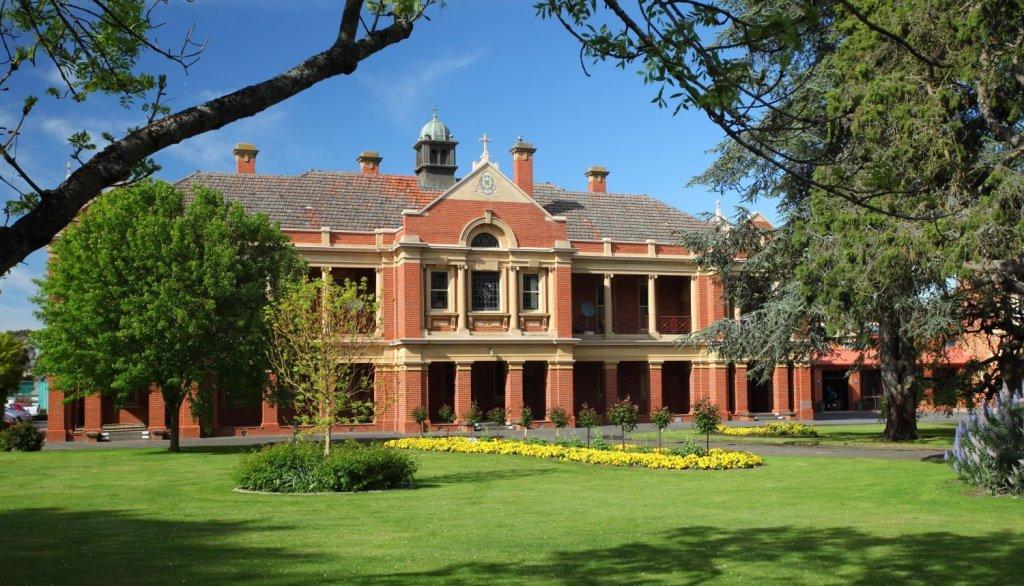
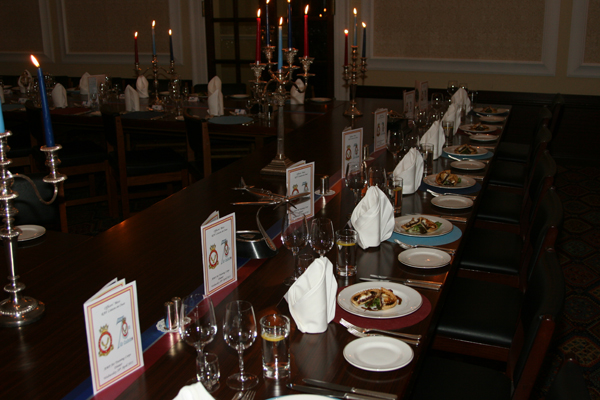 nights, formal balls etc. becoming a RAAF Officer was still a shock for
a boy from the bush. You got a cup of tea, brewed to your recipe,
delivered to your bedside table around an hour before the start of
work. You had a serviette with a reserved position in the serviette
rack for its garaging. Stewards hovered around the table anticipating
your desire for salt, pepper, sauce or mustard. You had calling cards
with raised print put into trays or under doors to introduce yourself to
the OC, PMC, and mess members. Cravats were considered to be AOK,
especially for sporting or informal occasions. It was a world far
removed from my life experiences and expectations.
nights, formal balls etc. becoming a RAAF Officer was still a shock for
a boy from the bush. You got a cup of tea, brewed to your recipe,
delivered to your bedside table around an hour before the start of
work. You had a serviette with a reserved position in the serviette
rack for its garaging. Stewards hovered around the table anticipating
your desire for salt, pepper, sauce or mustard. You had calling cards
with raised print put into trays or under doors to introduce yourself to
the OC, PMC, and mess members. Cravats were considered to be AOK,
especially for sporting or informal occasions. It was a world far
removed from my life experiences and expectations. 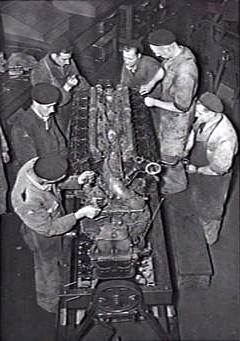 Squadron’s primary role was the overhaul and repair of the Canberra
aircraft Avon Mk1, the Westinghouse J34 as fitted to the Neptune, and
Canberra aircraft Turbo Starters. The CO was Wing Commander Ron Lavers a
gruff and tough mountain of a man with a very soft heart. When all was
well he openly called all subordinates ‘Shagger’ – on the one time my
parents visited Laverton this gave my mother some difficulty.
Alternatively, if he called you by your surname you knew it was not
going to be good, with some form of punishment being nanoseconds away.
Squadron’s primary role was the overhaul and repair of the Canberra
aircraft Avon Mk1, the Westinghouse J34 as fitted to the Neptune, and
Canberra aircraft Turbo Starters. The CO was Wing Commander Ron Lavers a
gruff and tough mountain of a man with a very soft heart. When all was
well he openly called all subordinates ‘Shagger’ – on the one time my
parents visited Laverton this gave my mother some difficulty.
Alternatively, if he called you by your surname you knew it was not
going to be good, with some form of punishment being nanoseconds away.
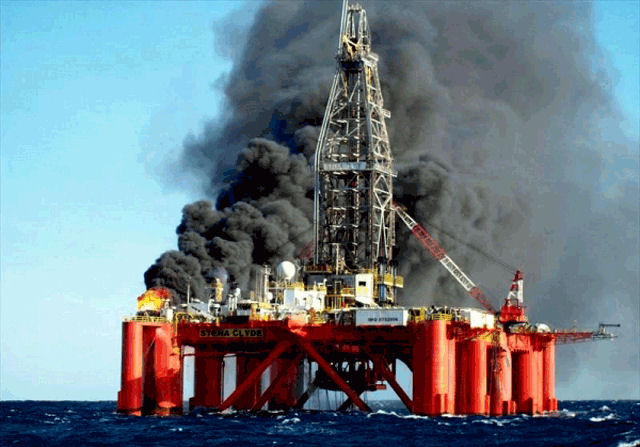
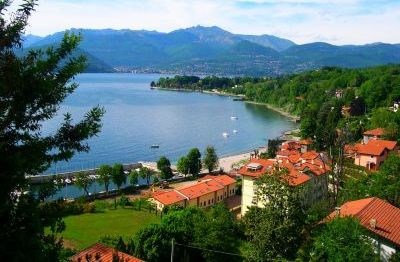
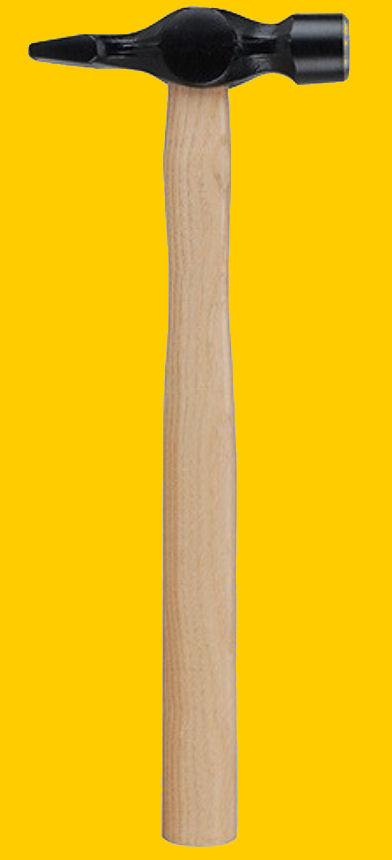 On
a lighter note a study performed by 2FTS, names suppressed, determined
that a cross-peen hammer was a more effective means of breaking out of a
canopy than the provided canopy breaker tool – and this became an
Operational Requirement. Well it was not quite as simple as going to
Bunnings – as many aspects like the generation of sparks as a result of
striking the canopy and its support structure had to be considered.
After significant study by ARL it was decided that the hammer had to be
made of beryllium. BHP did not sell beryllium. Some years later the RAAF
had accumulated 100 sets of these hammers and was ready to implement
Macchi fleet fitment. However; by this time the RAAF posting cycle had
taken its toll; the management at 2FTS had changed and with it went the
requirement for the beryllium hammer solution. So if anyone needs a
beryllium hammer the ADF has, or had, at least 200 spares. They should
come at a good price – but be warned there is sign on the side that
warns against licking the head.
On
a lighter note a study performed by 2FTS, names suppressed, determined
that a cross-peen hammer was a more effective means of breaking out of a
canopy than the provided canopy breaker tool – and this became an
Operational Requirement. Well it was not quite as simple as going to
Bunnings – as many aspects like the generation of sparks as a result of
striking the canopy and its support structure had to be considered.
After significant study by ARL it was decided that the hammer had to be
made of beryllium. BHP did not sell beryllium. Some years later the RAAF
had accumulated 100 sets of these hammers and was ready to implement
Macchi fleet fitment. However; by this time the RAAF posting cycle had
taken its toll; the management at 2FTS had changed and with it went the
requirement for the beryllium hammer solution. So if anyone needs a
beryllium hammer the ADF has, or had, at least 200 spares. They should
come at a good price – but be warned there is sign on the side that
warns against licking the head. 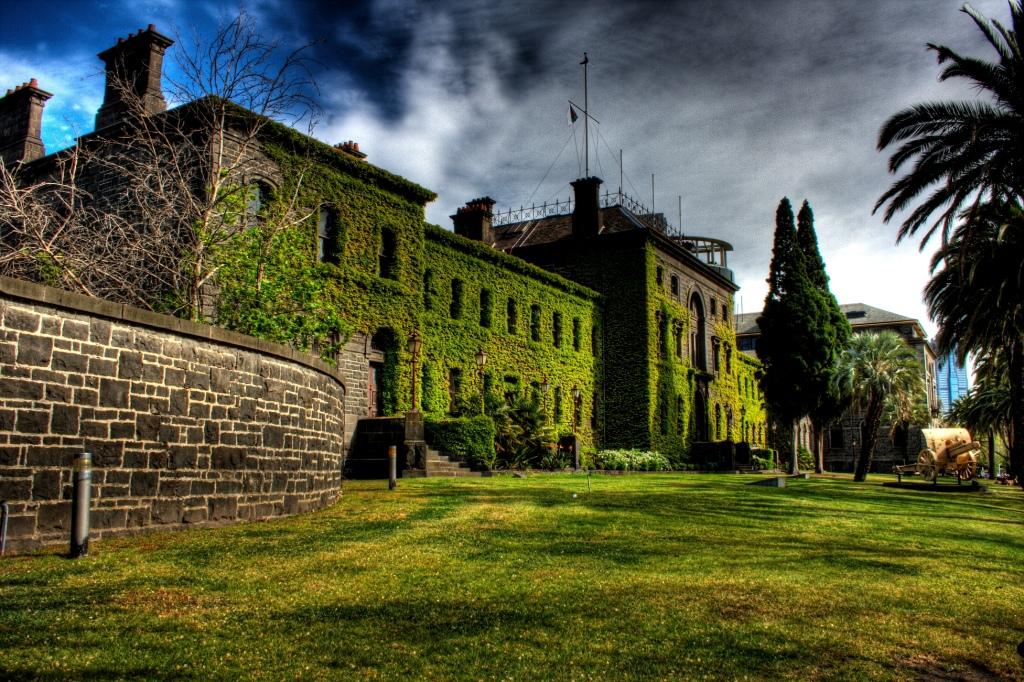 were some folk known as Gun Plumbers. The mix was filled out with some
token GD and a flush of Admin types, but the latter were not really part
of the main game. These tribes co-existed in a state of mutual
distrust.
were some folk known as Gun Plumbers. The mix was filled out with some
token GD and a flush of Admin types, but the latter were not really part
of the main game. These tribes co-existed in a state of mutual
distrust. 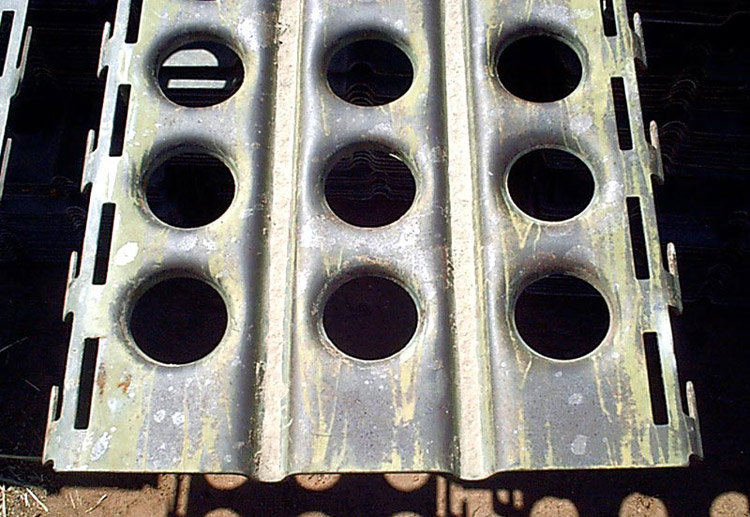 quite some distance and the construction went on into the night. The
process consisted of ad hoc teams of two picking up a PSP sheet from the
pile parked at the end of the runway and carrying to the bitter end of a
growing temporary PSP highway, locating and interlocking your piece,
then returning to the pile and doing it over – and over. One troop
arrived back at the PSP pile and for unknown reason the other half of
his team was not standing on the opposite side of the PSP pile - but in
the failing light and rain he could see a bloke in a dark overcoat
standing nearby. The Troop said something like – “well don’t just
xxxxxxx stand there!” or words to that effect. The bloke in the dark
overcoat responded by picking up the other end of the PSP, a new team
was born, and they proceeded to cart PSP into the dark and rainy night.
The bloke in the dark coat was the OC, then Air Commodore David Evans.
quite some distance and the construction went on into the night. The
process consisted of ad hoc teams of two picking up a PSP sheet from the
pile parked at the end of the runway and carrying to the bitter end of a
growing temporary PSP highway, locating and interlocking your piece,
then returning to the pile and doing it over – and over. One troop
arrived back at the PSP pile and for unknown reason the other half of
his team was not standing on the opposite side of the PSP pile - but in
the failing light and rain he could see a bloke in a dark overcoat
standing nearby. The Troop said something like – “well don’t just
xxxxxxx stand there!” or words to that effect. The bloke in the dark
overcoat responded by picking up the other end of the PSP, a new team
was born, and they proceeded to cart PSP into the dark and rainy night.
The bloke in the dark coat was the OC, then Air Commodore David Evans.
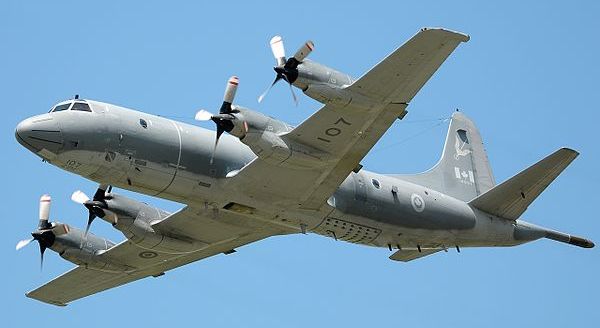 resulted in some constructive and destructive intermixing. Come April
Fools Day it was decided to issue an invitation, cheekily on behalf of
Lockheed, inviting the Canadian team to assemble on the tarmac
immediately upon arrival at work for a conducted tour over an SR-71.
The Burbank runway is not long enough to do an SR-72 taxi trial, let
alone a landing or take-off. Anyway the invitations were readied and on
the evening of 31 March, immediately after they had left for the day, a
copy was placed on each and every Canadian desk. Upon our arrival at
work on the morning of 1 April there was not a Canuk to be seen, they
had all gone to the SR-71 conducted tour. Whilst we all thought this to
be hilarious – in the short term it was not necessarily appreciated by
all and a few apologies and explanations were necessary.
resulted in some constructive and destructive intermixing. Come April
Fools Day it was decided to issue an invitation, cheekily on behalf of
Lockheed, inviting the Canadian team to assemble on the tarmac
immediately upon arrival at work for a conducted tour over an SR-71.
The Burbank runway is not long enough to do an SR-72 taxi trial, let
alone a landing or take-off. Anyway the invitations were readied and on
the evening of 31 March, immediately after they had left for the day, a
copy was placed on each and every Canadian desk. Upon our arrival at
work on the morning of 1 April there was not a Canuk to be seen, they
had all gone to the SR-71 conducted tour. Whilst we all thought this to
be hilarious – in the short term it was not necessarily appreciated by
all and a few apologies and explanations were necessary. 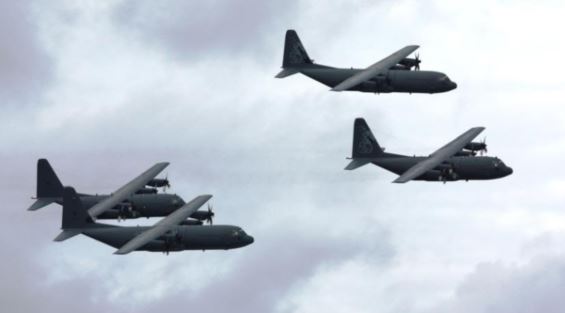 get the complete C130 fleet of 24 aircraft airborne in one large group.
A window of a couple of days existed where no aircraft were scheduled to
be at Qantas for Deeper Maintenance, so the date was set and maintenance
and flight crews worked up for the event. Flying Hercules aircraft in
large formations was not routine so considerable effort was required of
the Flying Squadron – to ensure sufficient crew with the essential
skills. The day arrived and the tension on flight line was palpable –
would all aircraft prove serviceable? Then out of the blue a SAR was
called, a Mayday had been issued by a yacht in Bass Strait. The focus
turned to fitting out and dispatching a Herc with the requisite
specialist gear – so now we were down to 23 for the flyby. The
remaining 23 proved service and the two Squadrons flew over Sydney in
close formation – the 24th aircraft was airborne of SAR duty
over Bass Strait. What a day!
get the complete C130 fleet of 24 aircraft airborne in one large group.
A window of a couple of days existed where no aircraft were scheduled to
be at Qantas for Deeper Maintenance, so the date was set and maintenance
and flight crews worked up for the event. Flying Hercules aircraft in
large formations was not routine so considerable effort was required of
the Flying Squadron – to ensure sufficient crew with the essential
skills. The day arrived and the tension on flight line was palpable –
would all aircraft prove serviceable? Then out of the blue a SAR was
called, a Mayday had been issued by a yacht in Bass Strait. The focus
turned to fitting out and dispatching a Herc with the requisite
specialist gear – so now we were down to 23 for the flyby. The
remaining 23 proved service and the two Squadrons flew over Sydney in
close formation – the 24th aircraft was airborne of SAR duty
over Bass Strait. What a day!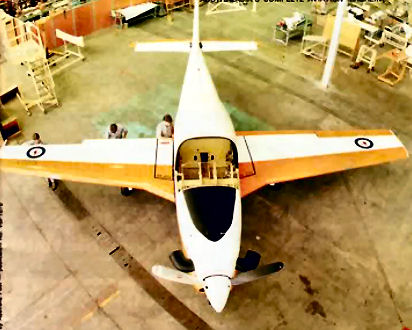
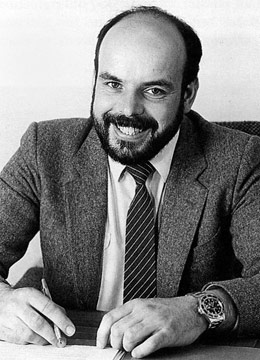 of
Australia, and part of their charter was to provide public aid in this
type of situation. I had met the manager, John Friedrich, (left) only a
couple of weeks previously so I called him, advised the situation and
requesting his support. He promised to send riders on horseback with
dogs to comprehensively comb the river banks and a helicopter to do slow
low level flights along the region of interest at first light. Just
after first light I got a call from John Friedrich advising that our
canoeist was found quietly paddling and was only a few km from the final
destination. His progress had been unexpectedly delayed due to lack of
navigatable water and when night fell he decided to camp the night. The
compass hike, without the canoe component, was put into action and
proved excitable enough to challenge the participant’s initiatives.
of
Australia, and part of their charter was to provide public aid in this
type of situation. I had met the manager, John Friedrich, (left) only a
couple of weeks previously so I called him, advised the situation and
requesting his support. He promised to send riders on horseback with
dogs to comprehensively comb the river banks and a helicopter to do slow
low level flights along the region of interest at first light. Just
after first light I got a call from John Friedrich advising that our
canoeist was found quietly paddling and was only a few km from the final
destination. His progress had been unexpectedly delayed due to lack of
navigatable water and when night fell he decided to camp the night. The
compass hike, without the canoe component, was put into action and
proved excitable enough to challenge the participant’s initiatives. 